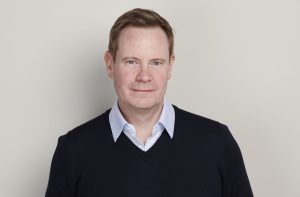Rates must rise, says MPC hawk

BANK of England hawk Ian McCafferty has explained to an audience in Liverpool why interest rates should rise.
Addressing a meeting of the Institute of Directors, Mr McCafferty set out his reasons for lifting rates from an historic low of 0.5%.
He is one of two of the Bank’s Monetary Policy Committee (MPC) members in favour of a rise and voted to increase the rate to 0.75% between August and November.
He said: “I have argued that a small rise in Bank rate would ensure that we act in good time, such that we can increase borrowing costs gradually, allowing consumers and businesses to adapt with minimum disruption. This, I have explained, is the best way of supporting and sustaining the economic expansion that is now well under way, while achieving our inflation target.”
Rates have been at 0.5% for more than five years to ease pressure on businesses and household incomes by making borrowing cheaper. But Mr McCafferty said household incomes will improve and business investment is increasing, and a rise would give the Bank greater flexibility with monetary policy. With rates at rock bottom the only measure at its disposal is quantitative easing.
Consumer demand has driven the recovery and although real wages have not increased Mr McCafferty suggested pay rates, which have been depressed by large numbers of low income jobs, will recover.
As the recovery progresses people will become more confident about finding a new job, and “employers will need to increase the wages of existing staff to entice them to stay put”.
And with unemployment at 6% he warned there may not be that much spare capacity left in the labour market. “We may well see the economy return to full capacity somewhat earlier than implied by our central forecast in the November Inflation Report.”
The rate-setter also said low rates were driving a “search for yield” by encouraging investors to increase their exposure to risky assets to which could increase the risks to financial stability. And he suggested it was important to “look through” the current inflation data that was subject to big fluctuations in commodity prices, such as oil. “The current situation is that the disinflationary effects of falling commodity prices and a rising exchange rate could mask a pickup in domestic inflationary pressure, requiring a more rapid policy response later on,” said Mr McCafferty.
He added: “We envisage that over the coming years, policy tightening will be both gradual and limited. To me, this gradualism is a critical element of our policy armoury. It minimises the disruption to consumers and businesses inherent in the normalisation of monetary policy, as well as allowing us to assess the impact of a policy change after a long period of stability – whether, for example, consumers are more sensitive to changes in interest rates currently than they were before the financial crisis.”








